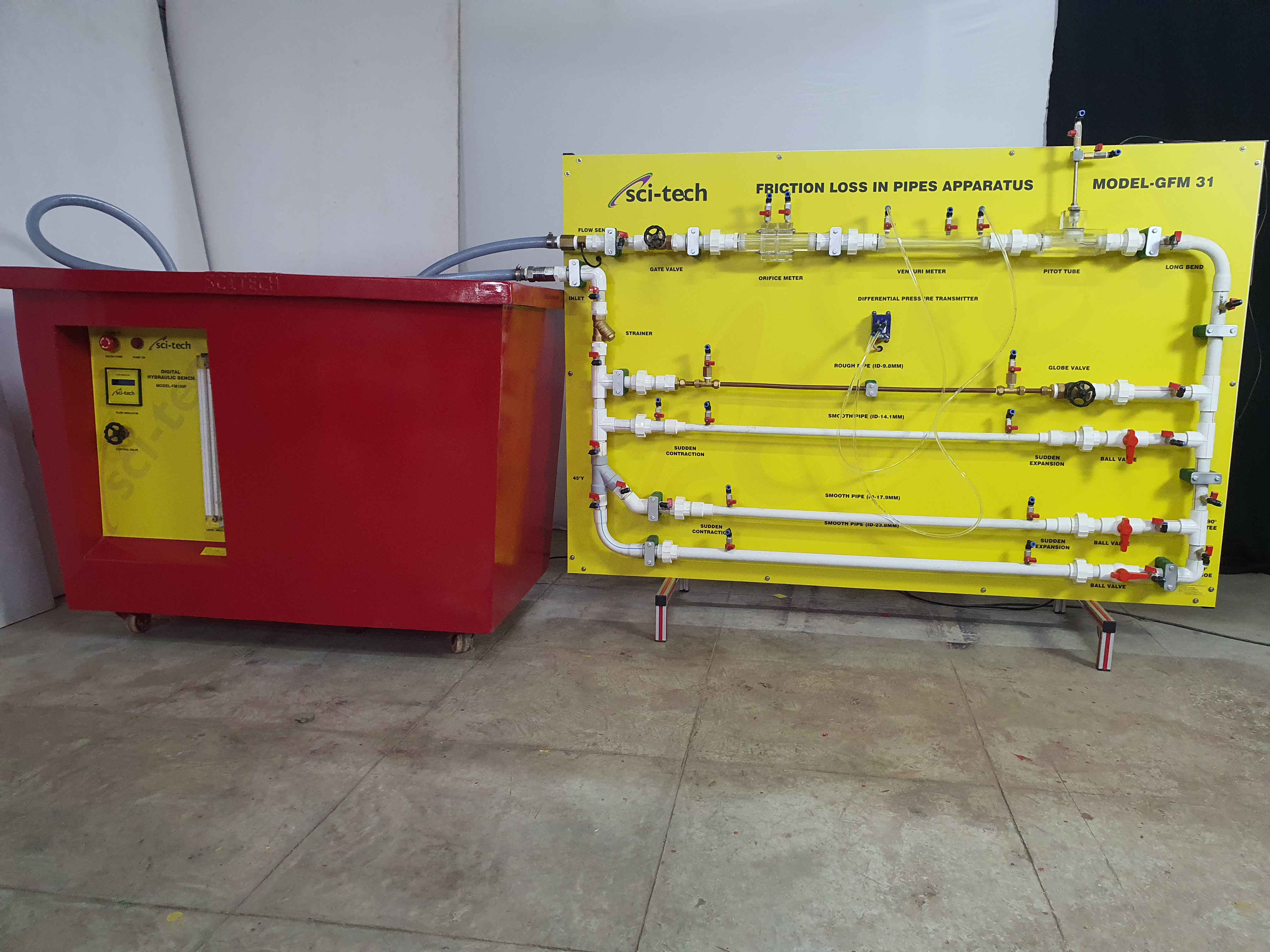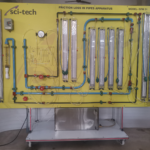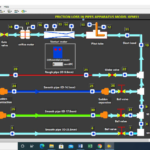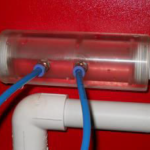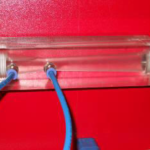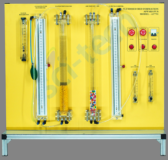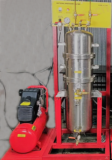Fluid Mechanics: Friction Loss in Pipes Apparatus MODEL GFM 31
Home » Products » Fluid Mechanics: Friction Loss in Pipes Apparatus MODEL GFM 31
Fluid Mechanics: Friction Loss in Pipes Apparatus MODEL GFM 31
Sci-tech Friction Loss in Pipes Apparatus Model GFM 31 has been designed to enable student measure loss of head in pipes due to friction at various flow velocities or Reynolds numbers. The geometry and flow parameters have been selected to enable studies in the ranges of practical interest.
Item Description
Study of friction loss in pipes is important in view pumping power requirements. The Friction Loss in Pipes Apparatus is an important experimental set-up for any Fluid Mechanics and Hydraulics Laboratory of an educational institution. The apparatus has been designed to enable student measure loss of head in pipes due to friction at various flow velocities or Reynolds numbers. The geometry and flow parameters have been selected to enable studies in the ranges of practical interest.
Sci-tech Friction Loss in Pipes Apparatus Model GFM 31 is mounted on a supporting rigid structure mounted on wheels/stand and is designed for use with the FM 100 Hydraulic Bench or any other suitable controlled water supply and recirculation system. The flow velocity is measured using the calibrated variable area flow meter and the measuring tank of the Hydraulic Bench. The head loss due to friction is measured using a suitably placed static pressure tapings, multi-tube manometer and digital pressure meter. Flow velocity or Reynolds number can be varied. A system of parallel pipe net work configuration and isolating valves enable tests to be conducted on different pipes without disconnecting or draining the system.
Technical Specifications
Important Features and Specifications:
(a) The Apparatus includes the following pipes for testing:
Smooth bore pipes: 27, 14 and 3.5 mm bore, 1800mm length, PVC.
Artificially roughened pipes, 23 and 17 mm bore, 1800mm length, PVC.
Color coding for piping system will be selected to suit user requirements.
(b) Pressure tapping is by small ball valves with quick connections will be provided at inlet and exit. Pressures are measured using multi-tube manometer. Pressure taps are connected to a set of manifolds by flexible pressure hoses such that differential pressure across pipe length can be measured by opening valves without removing the hoses.
(c) Flow measurement using Variable Area Flow Meter and measurement tank of the Hydraulic Bench.
(d) Water Manometer with hand air pump, 8 tubes X 800 mm with 1mm reading
(e) Mercury Manometer, 2 tubes X 500 mm with 1mm reading.
(f) Digital Pressure Meter.
Options:
1. Based on the request by the user, it is possible to include any other types of pipe (material and bore) in the apparatus.
90 ° Bend
90 ° Elbow
90 ° Tee
45 ° Elbow
Sudden Enlargement
Sudden Contraction
Inline Strainer
2. Friction in Pipes Apparatus with computer control and data acquisition and electronic transducers for flow and pressure measurements can be provided on request.
3. A Floor Mounted unit of the Friction in Pipes Apparatus mounted on a mobile platform and with a flow controlled closed circuit water circulation unit consisting of centrifugal pump, flow meter, corrosion resistant sheet metal flow measuring tank and a sump tank can be supplied on request.
The manual describing the theoretical and practical aspects of the apparatus, operation, maintenance and analysis of results and estimation of errors will be supplied with the equipment. Computer aided learning program will be provided to facilitate calculations and presentation of results. Short samples of all pipes used will be supplied to enable students to measure the internal diameter.
‘Sci-Cal’ software & hardware has been designed for use with more than 200 ‘Sci-tech’ trainers. ‘Sci-Cal’ comes in a module that can be fitted or mounted on the Sci-tech trainers very easily.
‘Sci-Cal’ box has 11 inches front HMI interactive panel, inside are i3 processor computer with it’s own hard drive & software processor with 16 to 32 analog and 16 to 32 digital signal data-loggers. The ‘Labview’ processes the input signal with in-built data and formulae to tabulate results for the Sci-tech trainers.
List of Experiments:
1. Familiarization and training with pressure and fluid flow measurements.
2. Study of pipe friction at various flow velocities.
3. Study of pipe friction in laminar and turbulent flows.
4. Study of effect of surface roughness on friction factor.
5. Determination of relationship between pipe friction factor and flow Reynolds numbers.
6. Comparison of measured friction factors with Moody’s chart..
Model Number
GFM 31
See also different:
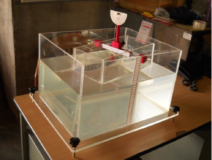
Sci-tech Stability of a Floating Body Apparatus Model FM 11 is a bench top unit designed to demonstrate the conditions for the stable, unstable and neutral equilibrium. The position of metacenter and hence the metacentric height can be varied [...]

